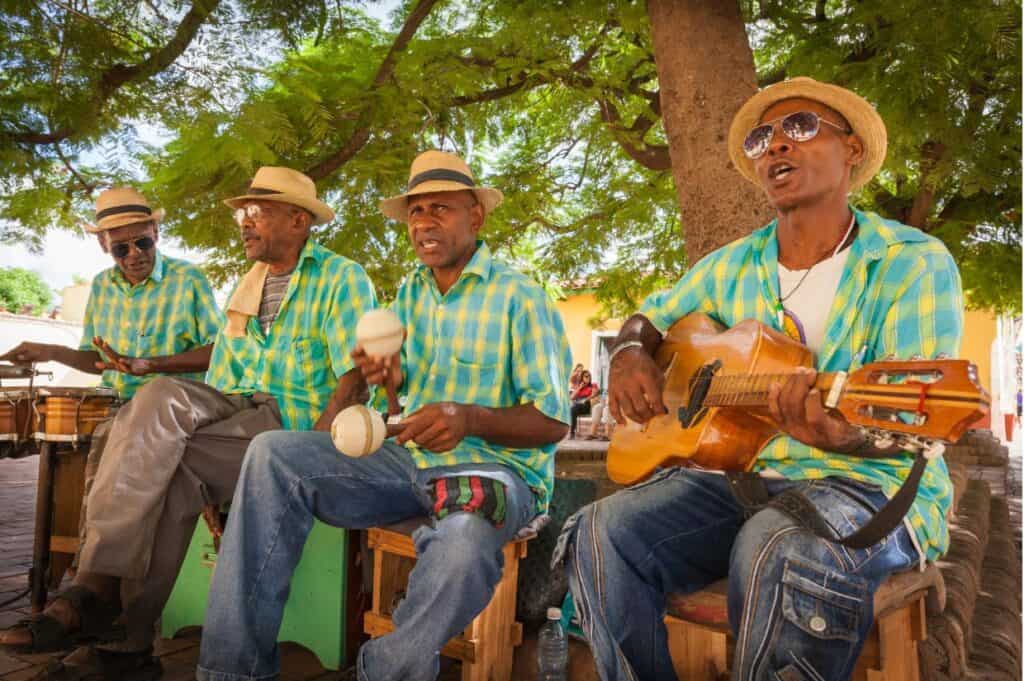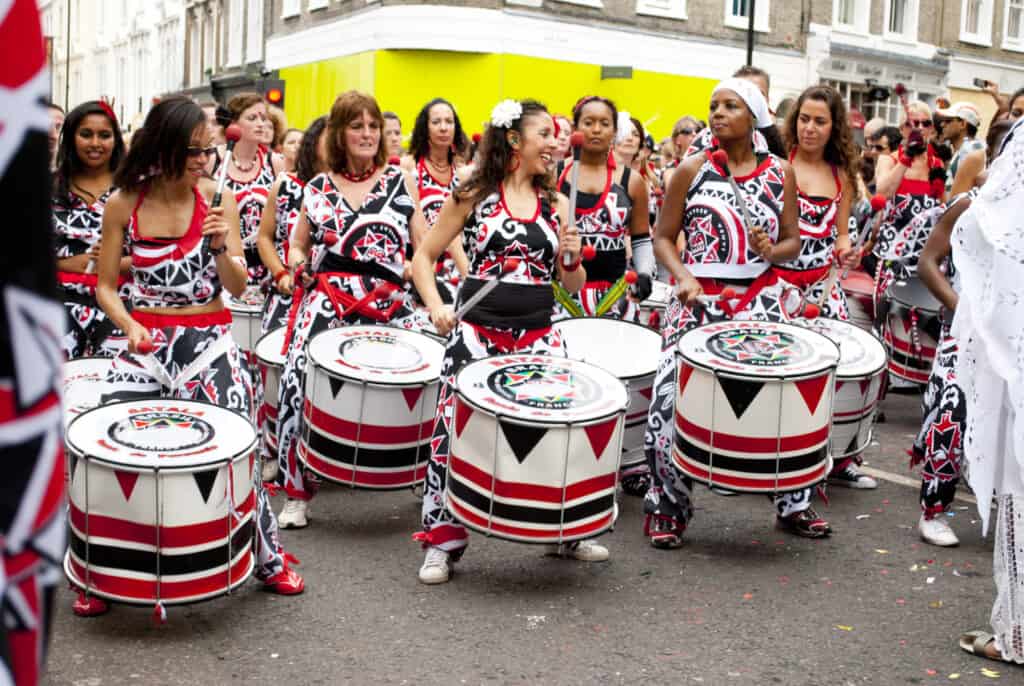When you think of Trinidad and Tobago, what comes to mind? For me, it’s the island vibes, the colorful festivals and, most importantly, the infectious rhythms that pulse through the air. Music is the heart and soul of these twin islands, and nowhere is this more evident than in the genres of soca and calypso. These two styles have shaped the musical landscape of Trinidad and Tobago and influenced music far beyond the Caribbean shores.

A symphony of history
Before we dive into the lively beats and catchy lyrics, let’s take a little trip back in time. Calypso has deep roots in the cultural tapestry of Trinidad and Tobago. It originated in the 19th century as a form of communication among enslaved Africans who were brought to the islands. They used songs to mock their oppressors, celebrate victories and tell stories of their homeland. Calypso was their voice, a powerful tool for storytelling and social commentary.
Fast forward to the early 20th century, and calypso began to evolve. By the 1940s and 1950s, it had become a mainstream sensation, with artists like Lord Kitchener and Mighty Sparrow leading the charge. Their clever wordplay, political satire and irresistible rhythms captivated audiences, not just in the Caribbean but around the world. Imagine the streets of Port of Spain during Carnival, filled with the sound of steel pans and calypso beats — it’s a scene straight out of a dream.
Soca: The new kid on the block
As much as I love calypso, we can’t talk about Trinidad and Tobago’s music scene without giving soca its time in the spotlight. Soca, short for soul of calypso, emerged in the 1970s as a modern evolution of calypso music. It was pioneered by the legendary Lord Shorty, who sought to create a new sound that blended calypso with other musical influences, including Indian rhythms and funk.
The result? A high-energy, dance-inducing genre that took the Caribbean by storm. Soca is all about celebration — think lively beats, infectious melodies and lyrics that make you want to dance all night. It’s no wonder soca has become synonymous with Carnival, the biggest and most vibrant festival in Trinidad and Tobago.
Carnival: The ultimate musical experience
Speaking of Carnival, if you ever find yourself in Trinidad and Tobago during this time, you’re in for a treat. Carnival is more than just a festival; it’s a cultural explosion, a sensory overload of colors, costumes and, of course, music. From the moment you step off the plane, you can feel the excitement in the air.

The streets come alive with the sound of soca and calypso. There’s something magical about joining a band and parading through the streets, surrounded by thousands of people moving to the same rhythm. Trust me, there’s nothing quite like dancing in the hot Caribbean sun, feeling the beat of the music in your bones, and letting the crowd’s energy carry you away.
Icons of the soundtrack
Let’s not forget the incredible artists who have shaped the soundtrack of Trinidad and Tobago. Mighty Sparrow, often referred to as the “Calypso King of the World,” is a true icon. His sharp wit and powerful voice have made him a legend in the calypso world. Songs like “Jean and Dinah” and “Congo Man” are timeless classics that continue to resonate with audiences today.
And then there’s Lord Kitchener, another giant of calypso. His smooth voice and catchy tunes have left an indelible mark on the genre. Who could resist singing along to “Sugar Bum Bum” or “Pan in A Minor”?
In the world of soca, artists like Machel Montano and Bunji Garlin have taken the genre to new heights. Machel Montano, often dubbed the “King of Soca,” has a string of hits that get everyone moving. Whether it’s “Like Ah Boss” or “Fast Wine,” his music is the life of the party.
The global impact
One of the most fascinating things about soca and calypso is their global reach. These genres have transcended the shores of Trinidad and Tobago, influencing music around the world. From Caribbean communities in New York and London to festivals in Japan and Europe, the vibrant sounds of soca and calypso can be heard far and wide.
Take Notting Hill Carnival in London, for example. This massive street festival draws inspiration from Trinidad and Tobago’s Carnival and features an abundance of soca and calypso music. It’s a testament to the power of these genres to bring people together and create a shared sense of joy and celebration.

My personal connection
For me, soca and calypso are more than just music; they are a connection to a rich cultural heritage. I remember my first trip to Trinidad and Tobago, stepping off the plane and being greeted by the sound of steel pans and the warm smiles of the locals. The music was everywhere — in the streets, in the markets and at every social gathering.
One of my fondest memories is joining a Carnival band and dancing through the streets of Port of Spain. The energy was electric, the costumes were dazzling, and the music was infectious. It was a celebration of life, culture and community, and I felt like I was part of something special.
The future of the soundtrack
As we look to the future, it’s clear that soca and calypso will continue to evolve and thrive. New artists are emerging, bringing fresh sounds and innovative ideas to the table. The fusion of genres and the incorporation of modern technology are pushing the boundaries of what soca and calypso can be.
Yet, at their core, these genres remain true to their roots. They are still about storytelling, celebration and connection. Whether you’re dancing to a soca beat at Carnival or listening to a classic calypso tune, you’re part of a vibrant musical tradition that spans generations.
So, next time you hear the lively rhythms of soca or the soulful melodies of calypso, take a moment to appreciate the rich history and cultural significance behind the music. And if you ever get the chance to experience it in Trinidad and Tobago, don’t hesitate — it’s a journey you’ll never forget.